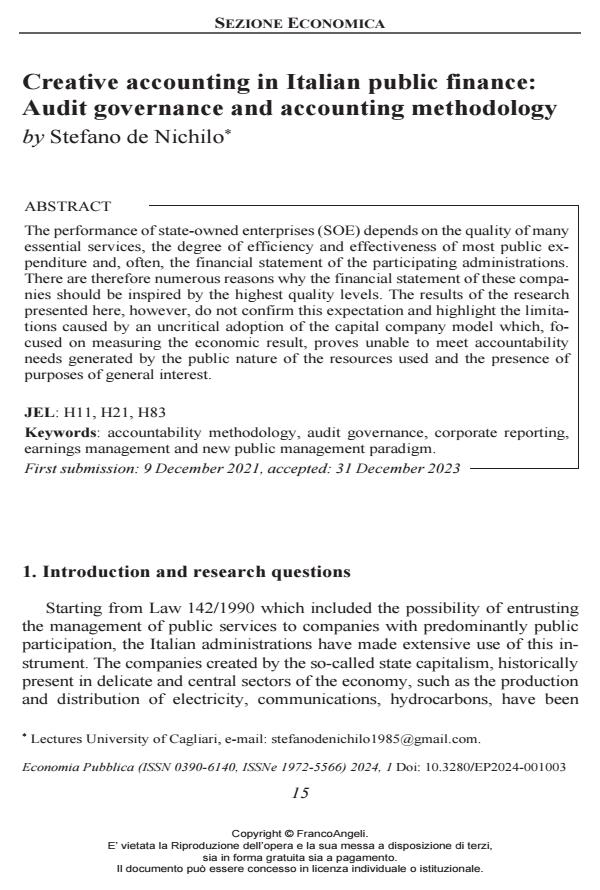Creative accounting in Italian public finance: Audit governance and accounting methodology
Journal title ECONOMIA PUBBLICA
Author/s Stefano de Nichilo
Publishing Year 2024 Issue 2024/1
Language English Pages 22 P. 15-36 File size 115 KB
DOI 10.3280/EP2024-001003
DOI is like a bar code for intellectual property: to have more infomation
click here
Below, you can see the article first page
If you want to buy this article in PDF format, you can do it, following the instructions to buy download credits

FrancoAngeli is member of Publishers International Linking Association, Inc (PILA), a not-for-profit association which run the CrossRef service enabling links to and from online scholarly content.
The performance of state-owned enterprises (SOE) depends on the quality of many essential services, the degree of efficiency and effectiveness of most public expenditure and, often, the financial statement of the participating admin-istrations. There are therefore numerous reasons why the financial statement of these companies should be inspired by the highest quality levels. The results of the research presented here, however, do not confirm this expectation and highlight the limitations caused by an uncritical adoption of the capital company model which, focused on measuring the economic result, proves unable to meet accountability needs generated by the public nature of the resources used and the presence of purposes of general interest.
Keywords: accountability methodology, audit governance, corporate reporting, earnings management and new public management paradigm.
Jel codes: H21, H83
Stefano de Nichilo, Creative accounting in Italian public finance: Audit governance and accounting methodology in "ECONOMIA PUBBLICA " 1/2024, pp 15-36, DOI: 10.3280/EP2024-001003